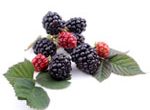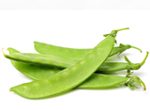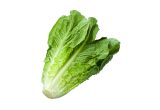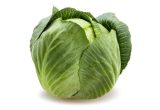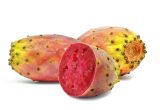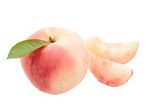Eggplant

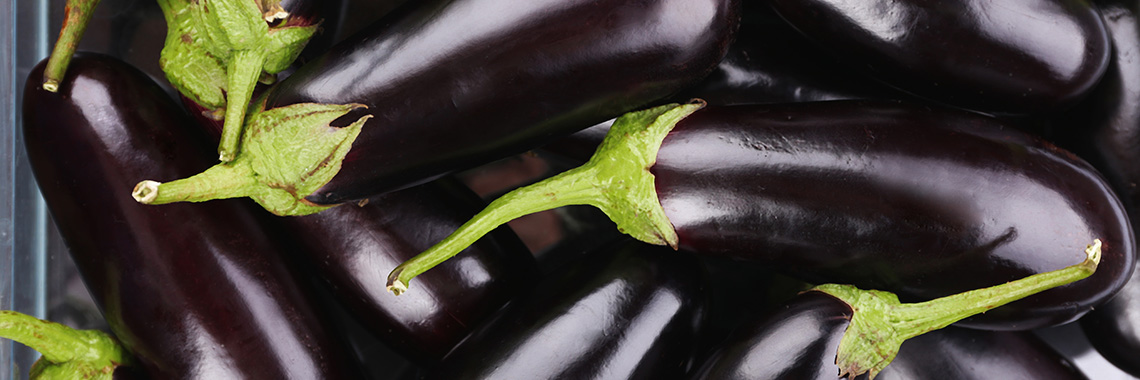
Description
- Aubergine (Solanum melongena L.) belongs to the Solanaceae family.
- The aubergine is a fruit native to South East Asia. It only began to be grown in Europe in significant quantities in the mid-19th century (Ctifl, 2003). It is commonly consumed as a vegetable.
- In Europe, aubergine is mainly produced in Italy, Spain and Romania (Eurostat, 2016).
PHYSICAL AND ORGANOLEPTIC CHARACTERISTICS
- Aubergine is a large size fruit (Ge, 2013). It weighs 225 g on average (Les fruits et légumes frais).
- An aubergine can be white, green, red, purple or black, either uniformly or with streaks (Ctifl, 2003).
- The pigments responsible for its purple colour are anthocyanins (delphinidin-3-rutinoside (D3R) and nasunin (NAS)) (Mennella, 2012). They also have the ability to increase plant resistance to stress (Li, 2018).
- Anthocyanin biosynthesis is regulated by light. In the aubergine cultivar Lanshan Hexian, the colour is revealed after two days of exposure to light (Li, 2018).
- Aubergine is a significant source of polyphenol oxidase. This enzyme is responsible for browning the flesh of the aubergine when it is cut (Mishra, 2012).
- The fruit also contains glycoalkaloids and saponins, nitrogen-containing secondary metabolites responsible for the typical bitter taste of aubergine flesh (Lelario, 2019).
- The colour, size and shape of the aubergine vary according to variety (Les fruits et légumes frais).
COMPOSITION CHARACTERISTICS (excluding macronutrients, vitamins and minerals)
- Aubergine contains polyphenolic acids. These have beneficial effects on health thanks to their protective capacity against certain chronic diseases, such as cancer or arthritis. Of these different acids, chlorogenic acid represents up to 90% of the total phenolic acids present in this fruit (Kaushik, 2019).
- The phenolic acid content in the flesh of aubergines varies between cultivars. Wild relatives of aubergine generally have higher diversity and concentrations of phenolic acids than modern cultivated varieties (Kaushik, 2019).
- Glycoalkaloids in aubergine play an important role in the defence of the plants against parasites. They have a wide range of pharmacological properties, including anti-cancer activity, and many are associated with the treatment of several diseases such as Alzheimer’s and myasthenia gravis (Lelario, 2019).
- A Chinese team evaluated the effects of continuous intake of aubergine powder or placebo on blood pressure (BP) in 100 stressed participants divided into three subgroups: normal BP, high BP or grade 1 hypertension: Aubergine powder intake significantly decreased diastolic blood pressure (DBP) at week 8 in the normal-high BP group and systolic blood pressure (SBP) and DBP at week 12 in all three groups, compared to the placebo groups. This antihypertensive effect is attributed to the choline esters, including acetylcholine, which are very present in aubergine (Nishimura, 2019).
RAW
The following values are approximate and depend on variety, season, ripeness, cultivation conditions, etc.
Raw aubergines are low in energy* as they provide an average of 21.20 calories (kcal) per 100 g or 88.80 kJ. An average aubergine weighs 225 to 250 g depending on the size, which corresponds to an energy intake of approximately 47.70 to 53 kcal.
COMPOSITION TABLES
For each nutrient, the tables provide information on the content, minimum and maximum values, as well as the percentage of the Dietary Reference Values (DRVs) per 100 g net of raw aubergine.
* Regulation (EC) No 1924/2006 of the European Parliament and of the Council of 20 December 2006 on nutrition and health claims made on foods.
MACRONUTRIENTS
| Constituent (g) | Average content |
Min-Max per 100g |
DRV% |
|---|---|---|---|
| Water | 92,9 | 90,80 - 93,90 | - |
| Fibers | 2,70 | 2,20 - 3,80 | - |
| Carbohydrates | 2,39 | - | 0,92 |
| Sugars | 2,39 | NC - 3,53 | 2,66 |
| Lipids | 0,14 | 0,10 - 0,30 | 0,20 |
| Saturated fat | 0,034 | - | 0,17 |
| Protein | 1,12 | 0,10 - 1,25 | 2,24 |
| Constituent (g) | Amount | Min-Max | DRV% |
|---|---|---|---|
| Water | Ciqual 2020 | - | - |
| Fibers | Ciqual 2020 | - | - |
| Carbohydrates | Ciqual 2020 | - | Règlement (UE) N°1169/2011 du parlement Européen et du conseil du 25 octobre 2011 |
| Sugars | Ciqual 2020 | - | Règlement (UE) N°1169/2011 du parlement Européen et du conseil du 25 octobre 2011 |
| Lipids | Ciqual 2020 | - | Règlement (UE) N°1169/2011 du parlement Européen et du conseil du 25 octobre 2011 |
| Saturated fat | Ciqual 2020 | - | Règlement (UE) N°1169/2011 du parlement Européen et du conseil du 25 octobre 2011 |
| Protein | Ciqual 2020 | - | Règlement (UE) N°1169/2011 du parlement Européen et du conseil du 25 octobre 2011 |
Zoom on carbohydrates
- The amount of carbohydrates present in raw aubergine (2.39 g per 100 g) is lower than the average amount present in raw vegetables (4.45 g per 100 g)
- These are mainly glucose (1.13 g per 100 g), fructose (1.12 g per 100 g) and sucrose (0.14 g per 100 g).
- Raw aubergine is low in sugar* as it contains less than 5 g per 100 g, or 2.39 g per 100 g.
Zoom on fibres
- The fibre content (2.70 g per 100 g) of raw aubergine is higher than the average amount found in raw vegetables (2.43 g per 100 g).
Zoom on protein
- The amount of proteins (1.12 g per 100 g) in raw aubergine is lower than the average amount found in raw vegetables (1.87 g per 100 g).
Zoom on lipids
- The amount of fat (0.14 g per 100 g) in raw aubergine is lower than the average amount found in raw vegetables (0.56 g per 100 g).
- Raw aubergine is fat-free*, as it contains less than 0.5 g per 100 g, i.e. 0.14 g per 100 g.
* Regulation (EC) No 1924/2006 of the European Parliament and of the Council of 20 December 2006 on nutrition and health claims made on foods.
MINERALS AND TRACE ELEMENTS
Constituent
Average content
Min-Max
per 100g
DRV%
Calcium
(mg)
8,70
6,12 - 12,30
1,09
Chloride
(mg)
-
-
-
Copper
(mg)
0,081
0,043 - 0,14
8,10
Iron
(mg)
0,32
0,17 - 0,40
2,29
Iodine
(µg)
0,15
0,02 - 0,30
0,10
Magnesium
(mg)
12
10 - 15
3,20
Manganese
(mg)
0,24
0,086 - 0,96
12
Phosphorus
(mg)
27,20
21 - 39,60
3,89
Potassium
(mg)
235
201 - 259
11,75
Selenium
(µg)
0,20
NC - 0,80
0,36
Sodium
(mg)
2,50
1 - 3
-
Zinc
(mg)
0,16
0,11 - 0,23
1,60
Constituent
Amount
Min-Max
DRV%
Calcium
(mg)
Ciqual 2020
-
Règlement (UE) N°1169/2011 du parlement Européen et du conseil du 25 octobre 2011
Chloride
(mg)
Ciqual 2020
-
Règlement (UE) N°1169/2011 du parlement Européen et du conseil du 25 octobre 2011
Copper
(mg)
Ciqual 2020
-
Règlement (UE) N°1169/2011 du parlement Européen et du conseil du 25 octobre 2011
Iron
(mg)
Ciqual 2020
-
Règlement (UE) N°1169/2011 du parlement Européen et du conseil du 25 octobre 2011
Iodine
(µg)
Ciqual 2020
-
Règlement (UE) N°1169/2011 du parlement Européen et du conseil du 25 octobre 2011
Magnesium
(mg)
Ciqual 2020
-
Règlement (UE) N°1169/2011 du parlement Européen et du conseil du 25 octobre 2011
Manganese
(mg)
Ciqual 2020
-
Règlement (UE) N°1169/2011 du parlement Européen et du conseil du 25 octobre 2011
Phosphorus
(mg)
Ciqual 2020
-
Règlement (UE) N°1169/2011 du parlement Européen et du conseil du 25 octobre 2011
Potassium
(mg)
Ciqual 2020
-
Règlement (UE) N°1169/2011 du parlement Européen et du conseil du 25 octobre 2011
Selenium
(µg)
Ciqual 2020
-
Règlement (UE) N°1169/2011 du parlement Européen et du conseil du 25 octobre 2011
Sodium
(mg)
Ciqual 2020
-
-
Zinc
(mg)
Ciqual 2020
-
Règlement (UE) N°1169/2011 du parlement Européen et du conseil du 25 octobre 2011
Zoom on minerals and trace elements
- Raw aubergine contains a significant amount of manganese and potassium. It brings the equivalent of:
- 12% of DRVs for manganese, i.e. 0.24 mg per 100 g;
- 11.75 % of DRVs for potassium, i.e. 235 mg per 100 g.
The other minerals and trace elements are present in quantities representing less than 9% of DRVs.
VITAMINS
Constituent
Average content
Min-Max
per 100g
DRV%
Provitamin A Beta-carotene
(µg)
14
0 - 37
-
Vitamin A equivalent
(µg)
2,33
0 - 6,17
0,29
Vitamin B1
(mg)
0,045
0,026 - 0,05
4,09
Vitamin B2
(mg)
0,034
0,03 - 0,05
2,43
Vitamin B3
(mg)
0,72
0,55 - 0,80
4,50
Vitamin B5
(mg)
0,25
0,22 - 0,35
4,17
Vitamin B6
(mg)
0,082
0,074 - 0,097
5,86
Vitamin B9
(µg)
24,50
13 - 27
12,25
Vitamin C
(mg)
2,10
0,80 - 3,50
2,63
Vitamin E
(mg)
0,17
0,03 - 0,30
1,42
Vitamin K1
(µg)
3,50
-
4,67
Constituent
Amount
Min-Max
DRV%
Provitamin A Beta-carotene
(µg)
Ciqual 2020
-
-
Vitamin A equivalent
(µg)
Calcul à partir de la valeur Provitamine A Béta-carotène*
-
Règlement (UE) N°1169/2011 du parlement Européen et du conseil du 25 octobre 2011
Vitamin B1
(mg)
Ciqual 2020
-
Règlement (UE) N°1169/2011 du parlement Européen et du conseil du 25 octobre 2011
Vitamin B2
(mg)
Ciqual 2020
-
Règlement (UE) N°1169/2011 du parlement Européen et du conseil du 25 octobre 2011
Vitamin B3
(mg)
Ciqual 2020
-
Règlement (UE) N°1169/2011 du parlement Européen et du conseil du 25 octobre 2011
Vitamin B5
(mg)
Ciqual 2020
-
Règlement (UE) N°1169/2011 du parlement Européen et du conseil du 25 octobre 2011
Vitamin B6
(mg)
Ciqual 2020
-
Règlement (UE) N°1169/2011 du parlement Européen et du conseil du 25 octobre 2011
Vitamin B9
(µg)
Ciqual 2020
-
Règlement (UE) N°1169/2011 du parlement Européen et du conseil du 25 octobre 2011
Vitamin C
(mg)
Ciqual 2020
-
Règlement (UE) N°1169/2011 du parlement Européen et du conseil du 25 octobre 2011
Vitamin E
(mg)
Ciqual 2020
-
Règlement (UE) N°1169/2011 du parlement Européen et du conseil du 25 octobre 2011
Vitamin K1
(µg)
Ciqual 2020
-
Règlement (UE) N°1169/2011 du parlement Européen et du conseil du 25 octobre 2011
Zoom on vitamins
- Raw aubergine contains a significant amount of vitamin B9 as it represents 12.25 % of DRVs for vitamin B9, i.e. 24.50 µg per 100 g.
- The amount of other vitamins is less than 6% of DRVs.
*Calculation performed: Beta Carotene / 6 + retinol
POLYPHENOLS
Constituent
(mg)
Average content
Min-Max
per 100mg
Phenolic Acids
(mg)
2,60
1,76 - 4,01
of which
Hydroxybenzoic acids
(mg)
1,57
0,84 - 2,79
of which
Hydroxycinnamic acids
(mg)
1,03
0,92 - 1,22
Lignanes
(mg)
0,11
0,07 - 0,14
Total polyphenols
2,71
1,83 - 4,15
Constituent
(mg)
Amount
Min-Max
Phenolic Acids
Phenol Explorer 3.6 Méthode utilisée : chromatographie après hydrolyse
-
of which
Hydroxybenzoic acids
Phenol Explorer 3.6 Méthode utilisée : chromatographie après hydrolyse
-
of which
Hydroxycinnamic acids
Phenol Explorer 3.6 Méthode utilisée : chromatographie après hydrolyse
-
Lignanes
Phenol Explorer 3.6 Méthode utilisée : chromatographie après hydrolyse
-
Total polyphenols
Phenol Explorer 3.6 Méthode utilisée : chromatographie après hydrolyse
-
Zoom on polyphenols
- Polyphenols are substances with an antioxidant effect.
- Raw aubergine contains few polyphenols according to chromatographic analysis after hydrolysis.
ROASTED/BAKED
The following values are approximate and depend on variety, season, ripeness, cultivation conditions, etc. Roasted/baked aubergines are low in energy* as they provide an average of 33.80 calories (kcal) per 100 g or 143 kJ. An average aubergine weighs 225 to 250 g, depending on the size, which corresponds to an energy intake of approximately 76.05 to 84.50 kcal.
COMPOSITION TABLES
For each nutrient, the tables provide information on the content, minimum and maximum values, as well as the percentage of the Dietary Reference Values (DRVs) per 100 g net of roasted/baked aubergine (flesh and skin), except for the table of polyphenols which refers to cooked aubergine (cooking method not specified).
* Regulation (EC) No 1924/2006 of the European Parliament and of the Council of 20 December 2006 on nutrition and health claims made on foods.
MACRONUTRIENTS
Constituent
(g)
Average content
Min-Max
per 100g
DRV%
Water
91
-
-
Fibers
1,90
-
-
Carbohydrates
3,83
0 - NC
1,47
Sugars
3,40
-
3,78
Lipids
< 0,30
-
-
Saturated fat
< 0,01
-
-
Protein
1,31
1,30 - NC
2,62
Constituent
(g)
Amount
Min-Max
DRV%
Water
Ciqual 2020 (valeur issue des analyses Ciqual-Aprifel 2018)
-
-
Fibers
Ciqual 2020 (valeur issue des analyses Ciqual-Aprifel 2018)
-
-
Carbohydrates
Ciqual 2020
-
Règlement (UE) N°1169/2011 du parlement Européen et du conseil du 25 octobre 2011
Sugars
Ciqual 2020 (valeur issue des analyses Ciqual-Aprifel 2018)
-
Règlement (UE) N°1169/2011 du parlement Européen et du conseil du 25 octobre 2011
Lipids
Ciqual 2020 (valeur issue des analyses Ciqual-Aprifel 2018)
-
Règlement (UE) N°1169/2011 du parlement Européen et du conseil du 25 octobre 2011
Saturated fat
Ciqual 2020 (valeur issue des analyses Ciqual-Aprifel 2018)
-
Règlement (UE) N°1169/2011 du parlement Européen et du conseil du 25 octobre 2011
Protein
Ciqual 2020 (valeur issue des analyses Ciqual-Aprifel 2018)
-
Règlement (UE) N°1169/2011 du parlement Européen et du conseil du 25 octobre 2011
Zoom on carbohydrates
- The amount of carbohydrates in baked aubergine (3.83 g per 100 g) is lower than the average amount in cooked vegetables (4.85 g per 100 g).
- Its carbohydrates are mainly glucose (1.80 g per 100 g), fructose (1.40 g per 100 g) and sucrose (0.20 g per 100 g).
- Baked aubergine is low in sugar* as it contains less than 5 g per 100 g, or 2.39 g per 100 g.
Zoom on fibres
- The fibre content (1.90 g per 100 g) of baked aubergine is lower than the average amount found in cooked vegetables (3.40 g per 100 g).
Zoom on protein
- The amount of proteins (1.31 g per 100 g) in baked aubergine is lower than the average amount found in cooked vegetables (2 g per 100 g).
Zoom on lipids
- Baked aubergine is fat-free*, as it contains less than 0.5 g per 100 g.
* Regulation (EC) No 1924/2006 of the European Parliament and of the Council of 20 December 2006 on nutrition and health claims made on foods.
MINERALS AND TRACE ELEMENTS
Constituent
Average content
Min-Max
per 100g
DRV%
Calcium
(mg)
13
-
1,63
Chloride
(mg)
-
-
-
Copper
(mg)
0,08
-
8
Iron
(mg)
0,59
-
4,21
Iodine
(µg)
< 20
-
-
Magnesium
(mg)
20
-
5,33
Manganese
(mg)
0,15
-
7,50
Phosphorus
(mg)
31
-
4,43
Potassium
(mg)
310
-
15,50
Selenium
(µg)
< 20
-
-
Sodium
(mg)
< 5
-
-
Zinc
(mg)
0,14
-
1,40
Constituent
Amount
Min-Max
DRV%
Calcium
(mg)
Ciqual 2020 (valeur issue des analyses Ciqual-Aprifel 2018)
-
Règlement (UE) N°1169/2011 du parlement Européen et du conseil du 25 octobre 2011
Chloride
(mg)
Ciqual 2020 (valeur issue des analyses Ciqual-Aprifel 2018)
-
Règlement (UE) N°1169/2011 du parlement Européen et du conseil du 25 octobre 2011
Copper
(mg)
Ciqual 2020 (valeur issue des analyses Ciqual-Aprifel 2018)
-
Règlement (UE) N°1169/2011 du parlement Européen et du conseil du 25 octobre 2011
Iron
(mg)
Ciqual 2020 (valeur issue des analyses Ciqual-Aprifel 2018)
-
Règlement (UE) N°1169/2011 du parlement Européen et du conseil du 25 octobre 2011
Iodine
(µg)
Ciqual 2020 (valeur issue des analyses Ciqual-Aprifel 2018)
-
Règlement (UE) N°1169/2011 du parlement Européen et du conseil du 25 octobre 2011
Magnesium
(mg)
Ciqual 2020 (valeur issue des analyses Ciqual-Aprifel 2018)
-
Règlement (UE) N°1169/2011 du parlement Européen et du conseil du 25 octobre 2011
Manganese
(mg)
Ciqual 2020 (valeur issue des analyses Ciqual-Aprifel 2018)
-
Règlement (UE) N°1169/2011 du parlement Européen et du conseil du 25 octobre 2011
Phosphorus
(mg)
Ciqual 2020 (valeur issue des analyses Ciqual-Aprifel 2018)
-
Règlement (UE) N°1169/2011 du parlement Européen et du conseil du 25 octobre 2011
Potassium
(mg)
Ciqual 2020 (valeur issue des analyses Ciqual-Aprifel 2018)
-
Règlement (UE) N°1169/2011 du parlement Européen et du conseil du 25 octobre 2011
Selenium
(µg)
Ciqual 2020 (valeur issue des analyses Ciqual-Aprifel 2018)
-
Règlement (UE) N°1169/2011 du parlement Européen et du conseil du 25 octobre 2011
Sodium
(mg)
Ciqual 2020 (valeur issue des analyses Ciqual-Aprifel 2018)
-
-
Zinc
(mg)
Ciqual 2020 (valeur issue des analyses Ciqual-Aprifel 2018)
-
Règlement (UE) N°1169/2011 du parlement Européen et du conseil du 25 octobre 2011
Zoom on minerals and trace elements
- Baked aubergine is a source of potassium as it provides the equivalent of 15.50% of DRVs for potassium, i.e. 310 mg per 100 g.
- The second most significant mineral in baked aubergine is copper as it represents 8% of the DRVs for copper.
- The other minerals and trace elements are present in quantities representing less than 8% of DRVs.
VITAMINS
Constituent
Average content
Min-Max
per 100g
DRV%
Provitamin A Beta-carotene
(µg)
60,20
-
-
Vitamin A equivalent
(µg)
10,03
-
1,25
Vitamin B1
(mg)
< 0,015
-
-
Vitamin B2
(mg)
< 0,01
-
-
Vitamin B3
(mg)
0,42
-
2,63
Vitamin B5
(mg)
0,52
-
8,67
Vitamin B6
(mg)
0,053
-
3,79
Vitamin B9
(µg)
< 5
-
-
Vitamin C
(mg)
< 0,50
-
-
Vitamin E
(mg)
< 0,08
-
-
Vitamin K1
(µg)
< 0,80
-
-
Constituent
Amount
Min-Max
DRV%
Provitamin A Beta-carotene
(µg)
Ciqual 2020 (valeur issue des analyses Ciqual-Aprifel 2018)
-
-
Vitamin A equivalent
(µg)
Calcul à partir de la valeur Provitamine A Béta-carotène*
-
Règlement (UE) N°1169/2011 du parlement Européen et du conseil du 25 octobre 2011
Vitamin B1
(mg)
Ciqual 2020 (valeur issue des analyses Ciqual-Aprifel 2018)
-
Règlement (UE) N°1169/2011 du parlement Européen et du conseil du 25 octobre 2011
Vitamin B2
(mg)
Ciqual 2020 (valeur issue des analyses Ciqual-Aprifel 2018)
-
Règlement (UE) N°1169/2011 du parlement Européen et du conseil du 25 octobre 2011
Vitamin B3
(mg)
Ciqual 2020 (valeur issue des analyses Ciqual-Aprifel 2018)
-
Règlement (UE) N°1169/2011 du parlement Européen et du conseil du 25 octobre 2011
Vitamin B5
(mg)
Ciqual 2020 (valeur issue des analyses Ciqual-Aprifel 2018)
-
Règlement (UE) N°1169/2011 du parlement Européen et du conseil du 25 octobre 2011
Vitamin B6
(mg)
Ciqual 2020 (valeur issue des analyses Ciqual-Aprifel 2018)
-
Règlement (UE) N°1169/2011 du parlement Européen et du conseil du 25 octobre 2011
Vitamin B9
(µg)
Ciqual 2020 (valeur issue des analyses Ciqual-Aprifel 2018)
-
Règlement (UE) N°1169/2011 du parlement Européen et du conseil du 25 octobre 2011
Vitamin C
(mg)
Ciqual 2020 (valeur issue des analyses Ciqual-Aprifel 2018)
-
Règlement (UE) N°1169/2011 du parlement Européen et du conseil du 25 octobre 2011
Vitamin E
(mg)
Ciqual 2020
-
Règlement (UE) N°1169/2011 du parlement Européen et du conseil du 25 octobre 2011
Vitamin K1
(µg)
Ciqual 2020 (valeur issue des analyses Ciqual-Aprifel 2018)
-
Règlement (UE) N°1169/2011 du parlement Européen et du conseil du 25 octobre 2011
Zoom on vitamins
- The vitamin best represented in baked aubergine is vitamin B5 with a content equivalent to 8.67 % of DRVs for vitamin B5, i.e. 0.52 mg per 100 g.
- The quantity of other vitamins represents less than 4% of DRVs.
*Calculation performed: Beta Carotene / 6 + retinol
POLYPHENOLS
Constituent
(mg)
Average content
Min-Max
per 100mg
Phenolic Acids
(mg)
23
-
of which
Hydroxybenzoic acids
(mg)
2,46
-
of which
Hydroxycinnamic acids
(mg)
20,53
-
Constituent
(mg)
Amount
Min-Max
Phenolic Acids
Etude CTCPA-Aprifel 2018 -Méthode utilisée : HPLC
-
of which
Hydroxybenzoic acids
Etude CTCPA-Aprifel 2018 -Méthode utilisée : HPLC
-
of which
Hydroxycinnamic acids
Etude CTCPA-Aprifel 2018 -Méthode utilisée : HPLC
-
Zoom on polyphenols (values for cooked aubergine – cooking method not specified)
- Polyphenols are substances with an antioxidant effect.
- The polyphenols present in cooked aubergine are mainly phenolic acids with a majority of hydroxycinnamic acids, according to HPLC analysis.
Nutrition and health claims
According to the definitions of nutrition claims as set out in Regulation (EC) No 1924/2006 on nutrition and health claims, and in view of the composition of raw aubergine, the following claim may be used:
NUTRITION CLAIMS OF RAW AUBERGINE:
- Low in energy (100 g of raw aubergine provide less than 40 kcal)
- Fat-free (100 g of raw aubergine provide less than 0.5 g)
- Low in sugar (100 g of raw aubergine provide less than 5 g)
Nutrition and health claims
According to the definitions of nutrition claims as set out in Regulation (EC) No 1924/2006 on nutrition and health claims, and in view of the composition of roasted/baked aubergines, the following claims may be used:
NUTRITION CLAIMS OF ROASTED/BAKED AUBERGINE
- Low in energy (100 g of baked aubergine provide less than 40 kcal)
- Fat-free (100 g of baked aubergine provide less than 0.5 g)
- Low in sugar (100 g of baked aubergine provide less than 5g)
- Source of potassium (100 g of baked aubergine provide more than 15% of DRVs)
HEALTH CLAIMS (for a consumption of 100 g of roasted/baked aubergine)
Potassium
- Potassium contributes to:
- normal functioning of the nervous system,
- normal muscle function,
- maintenance of normal blood pressure.
References
- Agence nationale de sécurité sanitaire de l’alimentation, de l’environnement et du travail. Table de composition nutritionnelle des aliments Ciqual 2020. Consultée le 04/08/2020 depuis le site internet Ciqual https://ciqual.anses.fr/
- Agence nationale de sécurité sanitaire de l’alimentation, de l’environnement et du travail. Table de composition nutritionnelle des aliments Ciqual pour le calcul des apports nutritionnels CALNUT 2020. Consultée le 14/09/2020 depuis le site internet Ciqual https://ciqual.anses.fr/
- Ctifl. L’aubergine. Paris : Ctifl, 159 p
- Ge HY, Liu Y, Zhang J, Han HQ, Li HZ, Shao WT, Chen HY. Simple sequence repeat-based association analysis of fruit traits in eggplant (Solanum melongena). Genet Mol Res. 2013;12(4):5651-63.
- Les fruits et légumes frais. L’aubergine : présentation, production, consommation [en ligne]. [consulté le 4 mars 2020]. Disponible sur: https://www.lesfruitsetlegumesfrais.com/fruits-legumes/legumes-fruits/aubergine/carte-identite
- Kaushik P. Genetic Analysis for Fruit Phenolics Content, Flesh Color, and Browning Related Traits in Eggplant (Solanum melongena).International Journal of Molecular Sciences. 2019;20(12):2990.
- Lelario F, De Maria S, Rivelli AR, Russo D, Milella L, Bufo SA, et al. A Complete Survey of Glycoalkaloids Using LC-FTICR-MS and IRMPD in a Commercial Variety and a Local Landrace of Eggplant (Solanum melongena L.) and their Anticholinesterase and Antioxidant Activities. Toxins. 2019;11(4):230.
- Li J, He Y-J, Zhou L, Liu Y, Jiang M, Ren L, et al. Transcriptome profiling of genes related to light-induced anthocyanin biosynthesis in eggplant (Solanum melongena L.) before purple color becomes evident. BMC Genomics. 2018;19(1):201.
- Mennella G, Lo Scalzo R, Fibiani M, D’Alessandro A, Francese G, Toppino L, Acciarri N, de Almeida AE, Rotino GL. Chemical and bioactive quality traits during fruit ripening in eggplant (S. melongena L.) and allied species. J Agric Food Chem. 2012;60(47):11821-31.
- Mishra BB, Gautam S, Sharma A. Purification and characterisation of polyphenol oxidase (PPO) from eggplant (Solanum melongena). Food Chem. 2012 ;134(4):1855-61.
- Neveu V, Perez-Jiménez J, Vos F, Crespy V, du Chaffaut L, Mennen L, Knox C, Eisner R, Cruz J, Wishart D, Scalbert A. (2010) Phenol-Explorer: an online comprehensive database on polyphenol contents in foods. Database, doi: 10.1093/database/bap024. Full text (free access)
- Nishimura M, Suzuki M, Takahashi R, Yamaguchi S, Tsubaki K, Fujita T, et al. Daily Ingestion of Eggplant Powder Improves Blood Pressure and Psychological State in Stressed Individuals: A Randomized Placebo-Controlled Study. Nutrients. 2019;11(11):2797.
- Règlement (CE) N° 1924/2006 du Parlement européen et du Conseil du 20 décembre 2006 concernant les allégations nutritionnelles et de santé portant sur les denrées alimentaires.
- Règlement (UE) N°432/2012 de la Commission du 16 mai 2012 établissant une liste des allégations de santé autorisées portant sur les denrées alimentaires, autres que celles faisant référence à la réduction du risque de maladie ainsi qu’au développement et à la santé infantiles.
- Règlement (UE) n°1169/2011 du Parlement européen et du Conseil du 25 octobre 2011 concernant l’information des consommateurs sur les denrées alimentaires, modifiant les règlements (CE) n°1924/2006 et (CE) n°1925/2006 du Parlement européen et de Conseil et abrogeant la directive 87/250/CEE de la Commission, la directive 90/496/CEE du Conseil, la directive 1999/10/CE de la Commission, la directive 200/13/CE du Parlement européen et du Conseil, les directives 2002/67/CE et 2008/5/CE de la Commission et le règlement (CE) n°608/2004 de la Commission.
- Silman I, Sussman JL. Acetylcholinesterase: how is structure related to function? Chemico-Biological Interactions. 2008;175(1-3):3-10.
- Talesa VN. Acetylcholinesterase in Alzheimer’s disease. Mechanisms of Ageing and Development. 2001;122(6): 1961–9.






